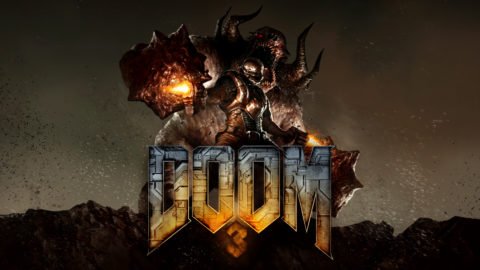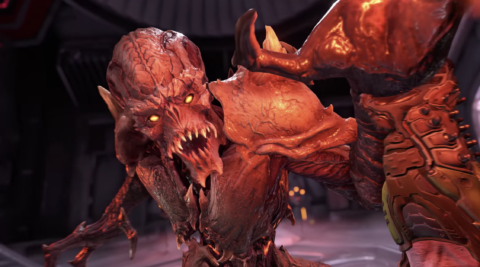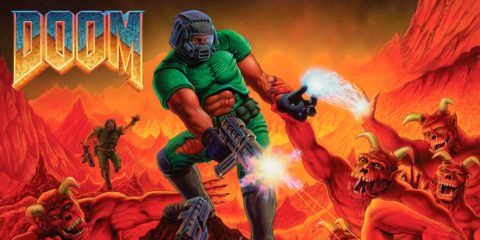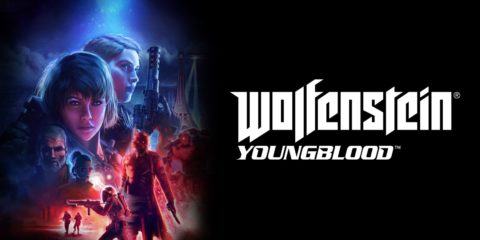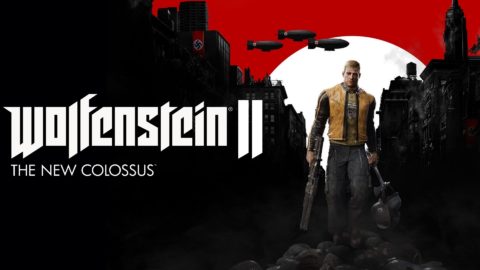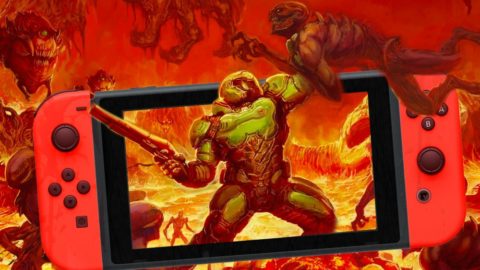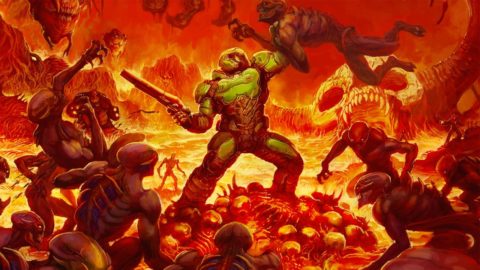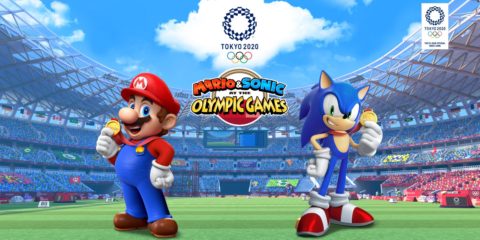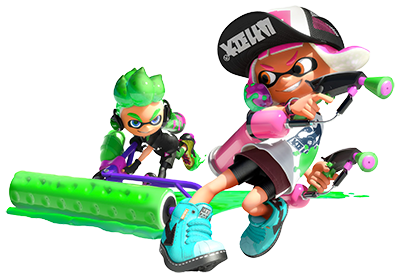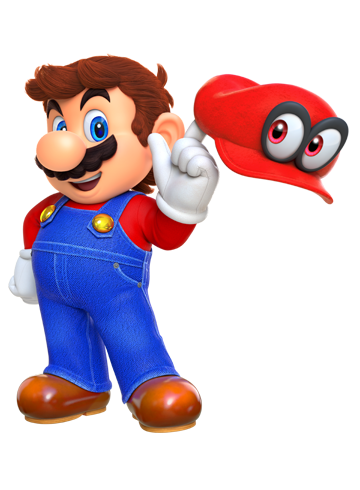After the great success that was DOOM (1993), the team at id Software was quick to begin work on a sequel. In less than a year, DOOM II released to fans who were eager to “rip and tear” their way through a brand new entry in the series. DOOM II isn’t radically different from its predecessor and it doesn’t need to be. Rather than reinvent the wheel, id Software decided to revisit their ideas and expand on them. While DOOM II shares some issues with the 1993 classic (and has its own), it also features thoughtful new additions that help make it a sequel worth experiencing.
Hell on Earth
The classic DOOM games focus on gameplay and level design more so than any other element. Narrative elements like a compelling story or meaningful characters are virtually nonexistent. However, DOOM II makes a bit more of an effort to detail Doomguy’s adventure than its predecessor did. Taking place immediately after the events of the original, DOOM II tells a story about saving humanity from a demonic invasion of earth. Through text-based interludes in between “episodes,” the game details Doomguy’s efforts at repelling the demons and eliminating them at their source. It isn’t the most enthralling story, but what’s interesting about it is that Doomguy no longer feels like a mindless demon murdering machine. Doomguy cares enough to save not only his hometown but all of humanity from this existential threat. It’s a small addition, but one that makes completing the game feel like a more well-rounded endeavor.
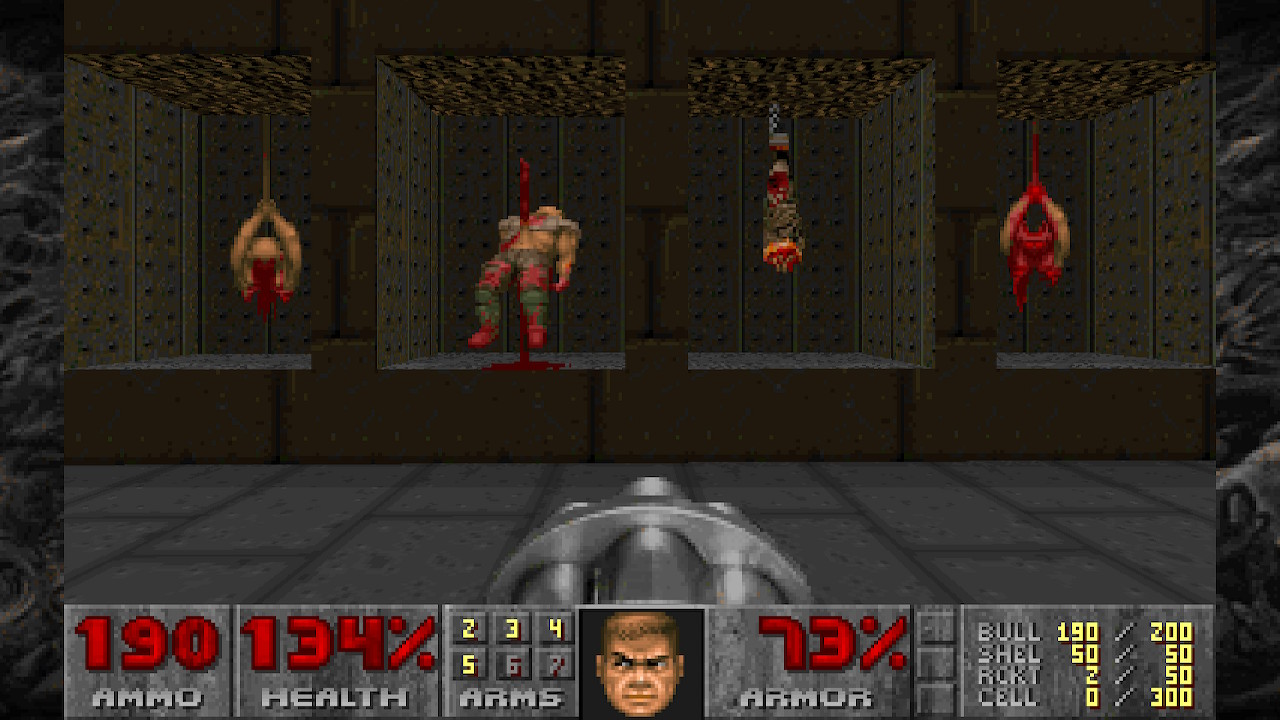
Super Shotgun Beats Rock, Paper, and Demons
DOOM II continues to ensure that the franchise’s gunplay is still satisfying as hell. Without major changes to the gunplay itself, the additions around it are what take center stage. There’s only one new weapon, the Super Shotgun, but it’s a fantastic addition to the gratifying arsenal of weapons already available to Doomguy. From its powerful impact to its indulging sound effects, the Super Shotgun quickly became my weapon of choice. There’s no point in using these weapons without any enemies to shoot, though, and DOOM II makes sure there’s plenty.
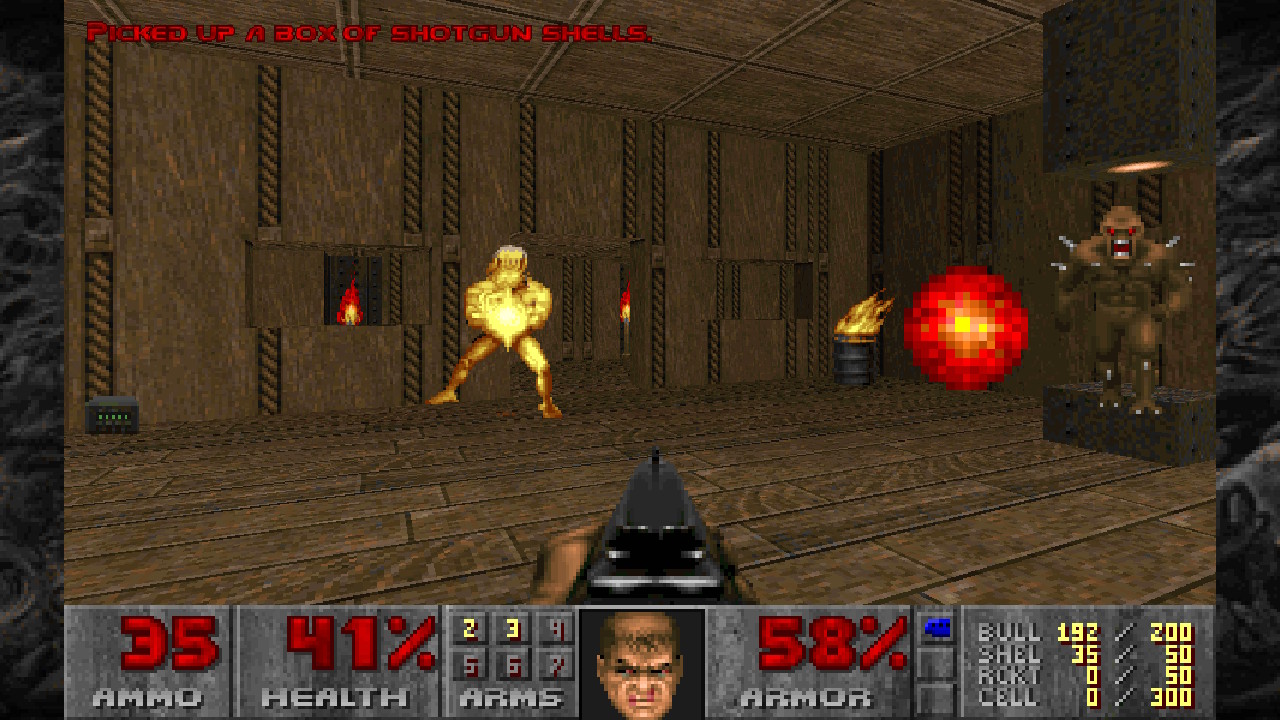
This entry features several new powerful enemies that intimidate not only in appearance but in their abilities as well. Enemies like the Arch-Vile and Revenant are legitimate threats that require players to thoughtfully engage them at every encounter. The Arch-Vile’s high health and ability to resurrect enemy corpses makes it horrifying to encounter in a crowded room. Revenants are particularly dangerous to fight against in an enclosed space as their fast movement speed and homing missiles make them hard to avoid. Enemies like the Mancubus, Arachnotron, and Pain Elemental are challenging in their own way and fit in nicely with the rest of the demonic cast. These new enemies and their distinct behaviors make the already engaging gunplay even more exciting to experience.
Labyrinths, Going Up
The ultimate goal of reaching the exit by surviving hordes of enemies and finding keys is the same, but sometimes DOOM II succeeds at making this more interesting by creating unique maps. Levels in DOOM (1993) suffered from cramped interconnected areas and repetitive locales. DOOM II addresses this by taking a more open and creative approach to its level design. Maps become multilayered labyrinths that allow for simple platforming, “open-world” environments, and visually distinct areas. Some levels aren’t necessarily labyrinths or mazes, either. Some maps start with a centralized nexus featuring branching paths or an open-area filled with gauntlets of enemies. This creativity and variety in level design create memorable moments that are a blast to experience.
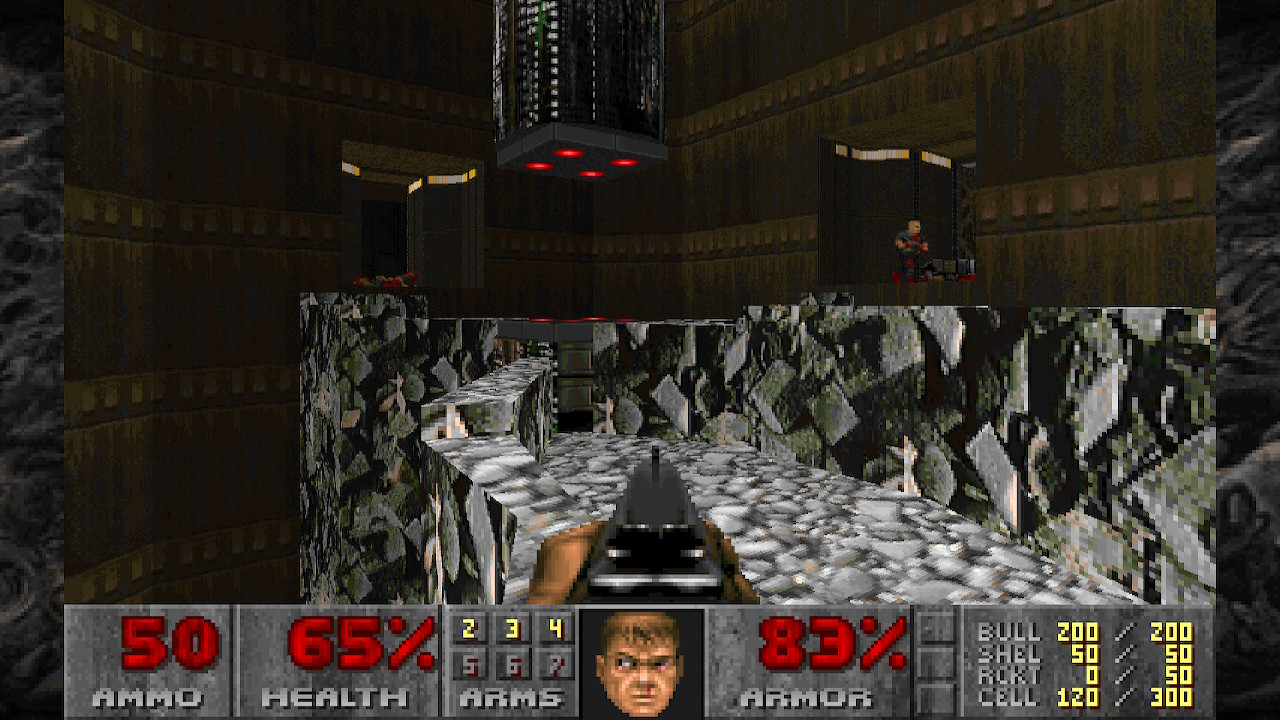
For all the benefits the new level designs provide, they also exacerbate the feeling of frustration inherent in the classic DOOM games. It’s very easy to lose your sense of direction in the more complex levels and it’s made worse by the fact that some areas feel entirely arbitrary. DOOM (1993) has its frustrating moments of confusion as well, but a level can be solved by being deliberate and thorough. In DOOM II, especially the city levels, knowing what to do next is a tedious exercise in trial and error and endless backtracking. These moments fail to feel like a challenge because the solutions feel like they were designed without rhyme or reason. It interrupts the flow of the action and forces players to spend time away from its more exciting elements.
Coming Up Next on DOOM II
DOOM II ditches the episodic nature of its predecessor for one continuous episode made up of 30 main levels. If the purpose of this was to create a more cohesive experience, then it feels at odds with the diverse level designs they were going for. DOOM II exchanges the consistency and cohesiveness of its predecessor for unique levels and gimmicks. While these things make for more exciting individual maps, their fluctuating quality creates an overall experience that feels disjointed. DOOM II features some of my favorite levels in the series (Tricks and Traps, The Waste Tunnels, Barrels O’ Fun), but it also features ones I never want to play again (The Pit, Industrial Zone, The Chasm). I appreciate that every level tries something new, but their inconsistent quality ensures that I’m only going to revisit my favorite levels instead of playing through the entire experience again.
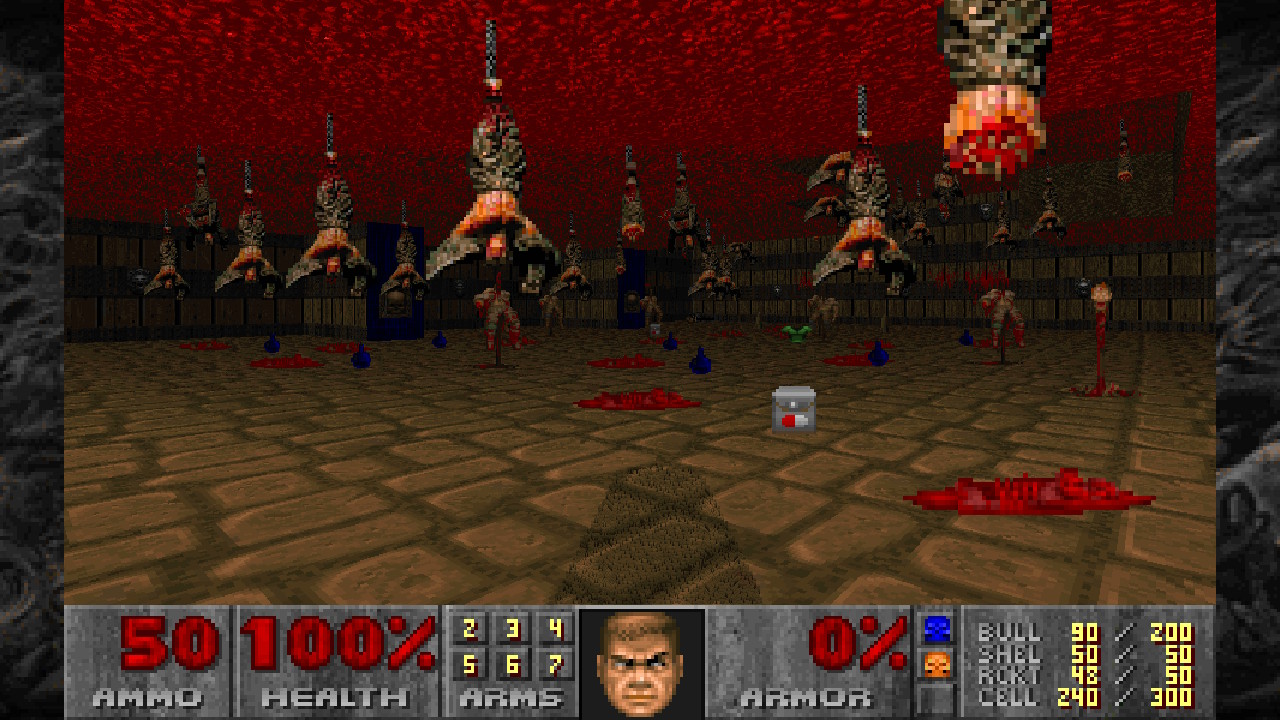
In the graphical and performance department, DOOM II looks and plays similar to the 1993 original. They use the same early 3D engine, old textures, and perform about the same throughout the entire game. It’s an old game, and it doesn’t look too great. The creative level design of DOOM II does make for more visually appealing moments than the original, but it’s definitely aging.
Master Levels, Multiplayer, and Madness
For players that are itching for more to do after completing the “Hell On Earth” campaign, DOOM II contains “The Master Levels.” These levels are a collection of 20 maps designed by various authors under contract and supervision by id Software in the 90s. Playing through them feels like a mixed bag. Some maps are designed well and feel innovative (Black Tower, The Catwalk, Bloodsea Keep), but the others are just infuriating to get through. They’re called the “Master Levels” for a reason but they don’t feel genuinely difficult. Some levels overly rely on enemies to create a “challenge” while others hide keys in locations that just make no sense. As a whole, they are not fun to play. Hardcore DOOM fans might enjoy the “difficulty” of these levels, but they’re far from the best DOOM II has to offer.
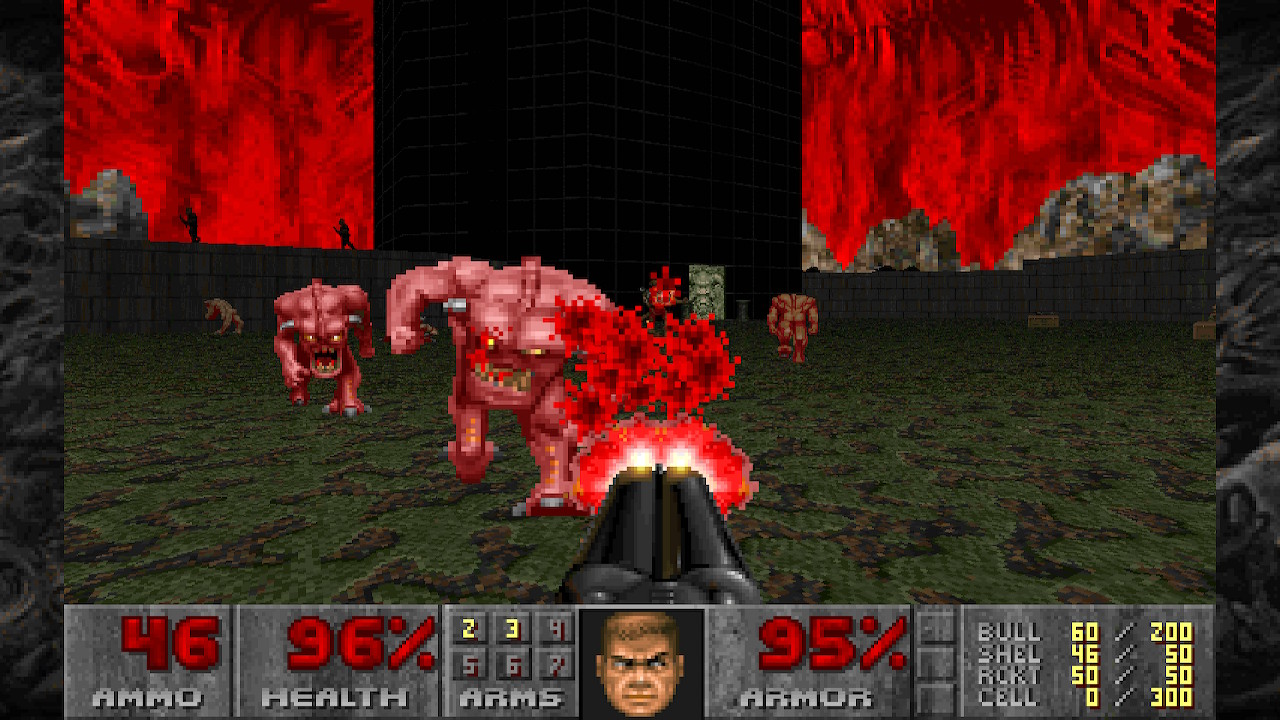
As is customary for the classic DOOM titles, this sequel would not be complete without multiplayer. You and three other friends can get together to blow each other’s brains out in a local deathmatch mode. Players can also come together to run through the singleplayer levels in four-player split-screen as well. The ability to freely choose what map to play on, in cooperative or competitive multiplayer, is always a blessing for when you just want to jump in to play with a friend. There is no classic DOOM without local split-screen multiplayer.
Final Thoughts
DOOM II didn’t need to be radically different from the original DOOM to be a worthwhile sequel. Improvements in level design like open-air environments, vertical traversal, and non-maze like levels make for more enthralling maps to explore. Additions like the Super Shotgun and enemies like the Arch-Vile add exciting moments to the already satisfying gunplay. For all it revises, however, DOOM II has its flaws. The sequel hasn’t aged well graphically, some levels are still exhausting to get through, and their inconsistent quality makes the overall experience feel disjointed. All in all, though, DOOM II is a good sequel to an incredibly influential first title. These new changes help it stand apart from the original by creating a classic DOOM experience all its own. DOOM II is available now on the Nintendo eShop for $4.99.
Review Copy Provided by Bethesda
